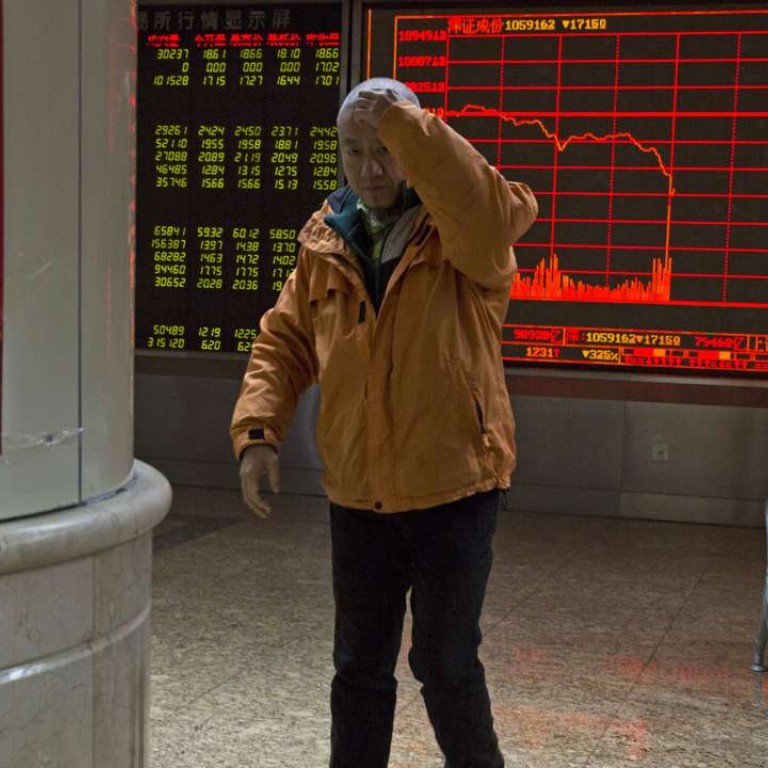
China’s pension funds set to pump 20b yuan into undervalued A shares
Mainland Chinese equity investors are anticipating the launch of a Chinese-style 401k retirement savings scheme after the National Social Security Fund (NSSF) named 21 asset managers to handle A-share investments by provincial-level pension funds.
It is expected that Beijing will soon allow the 2 trillion yuan worth of pension pools across the country to buy A shares, a move likely to pump at least 20 billion yuan of fresh capital into the market initially.
The liberalisation is seen as an official inauguration of China’s own “401k” which will encourage pension funds to invest in the capital market to chase long-term returns.
“A fresh capital injection is always well received by the market,” said Wu Kan, head of equity trading at Shanghai-based investment firm Shanshan Finance. “The rudimentary form of 401k is set to shore up investor confidence although the initial investment will not be enough to spark a strong rally.”
Earlier this week, the NSSF announced that 21 mutual fund houses, brokerages and insurers would be mandated to manage the pension funds, a concrete step Beijing took to divert some local pension fund assets to the stock market.
State-owned media said the first batch of buying orders would be placed by the designated asset managers on behalf of the provincial-level pension funds at year end.
The NSSF, which had assets of more than 1.5 trillion yuan at the end of 2015, is a reserve fund that supplements mainland pension pools.
Provincial governments are responsible for paying out pensions in their own regions.
The NSSF is currently allowed to invest up to 30 per cent of its total assets in equities and provincial-level pension pools are also expected to be subject to a 30 per cent cap on equity buying.

Bank of China chief economist Cao Yuanzheng predicted that the pension financing gap would swell to 68.2 trillion yuan by 2033 from about 16.5 trillion yuan in 2010, driven by the country’s ageing population.
By directing pension funds to the stock market the central government hopes to fine-tune the national social security system to help the underfunded pension pools pursue a long-term asset growth.
In August 2015 the State Council introduced a rule governing the investment scope of provincial-level pension funds, allowing them to buy stocks.
The A-share market is believed to offer plenty of good buys given its relatively low valuation now.
The benchmark Shanghai Composite Index is currently about 40 per cent shy of the close on June 12, 2015 when the latest boom-to-bust cycle began, wiping out US$5 trillion of capitalisation.
The China Securities Regulatory Commission has been focused on maintaining market stability this year, but the majority of investors are still taking a wait-and-see attitude due to lacklustre economic growth and corporate earnings.
On the mainland, any move to boost market liquidity is interpreted by investors as a market-boosting measure, prompting them to load up on shares in anticipation of an upcoming rally.
The NSSF, with its government backing and large fund size, is known as a powerful institution and a barometer for policy directions.
Pension funds are supposed to chase stable returns with strong risk awareness
In the past decade, heavy buying by the national pension fund was often followed by a market rally.
Investors believe the national pension fund is a front runner when it comes to sniffing out the best investment opportunities and its strong buying of shares could signal a potential turnaround in a weak market.
“Pension funds are supposed to chase stable returns with strong risk awareness,” said Ivan Li, a trade dealer at Everbright Securities. “They will take a cautious approach in building up their A-share positions.”
Companies listed on the Shanghai exchange are now trading at about 16 times their 2015 earnings, a level that analysts believe is creating opportunities for institutions to discover undervalued stocks.
But analysts predict that the 30 per cent investment cap for local pension pools will be symbolic because only a small portion of the staggering 2 trillion yuan in assets will be used to buy stocks.
Huatai Securities estimates that 400 billion yuan of capital will be eventually earmarked by the provincial-level pension funds for A shares, representing less than 1 per cent of the total market value.
Among the 21 designated asset managers mandated to manage funds allocated by the provincial-level pension pools are China’s largest mutual fund houses, including China Asset Management and the country’s biggest brokerage Citic Securities.
The NSSF reported a 15.2 per cent return on equity investments last year, pocketing gains of 229 billion yuan.

